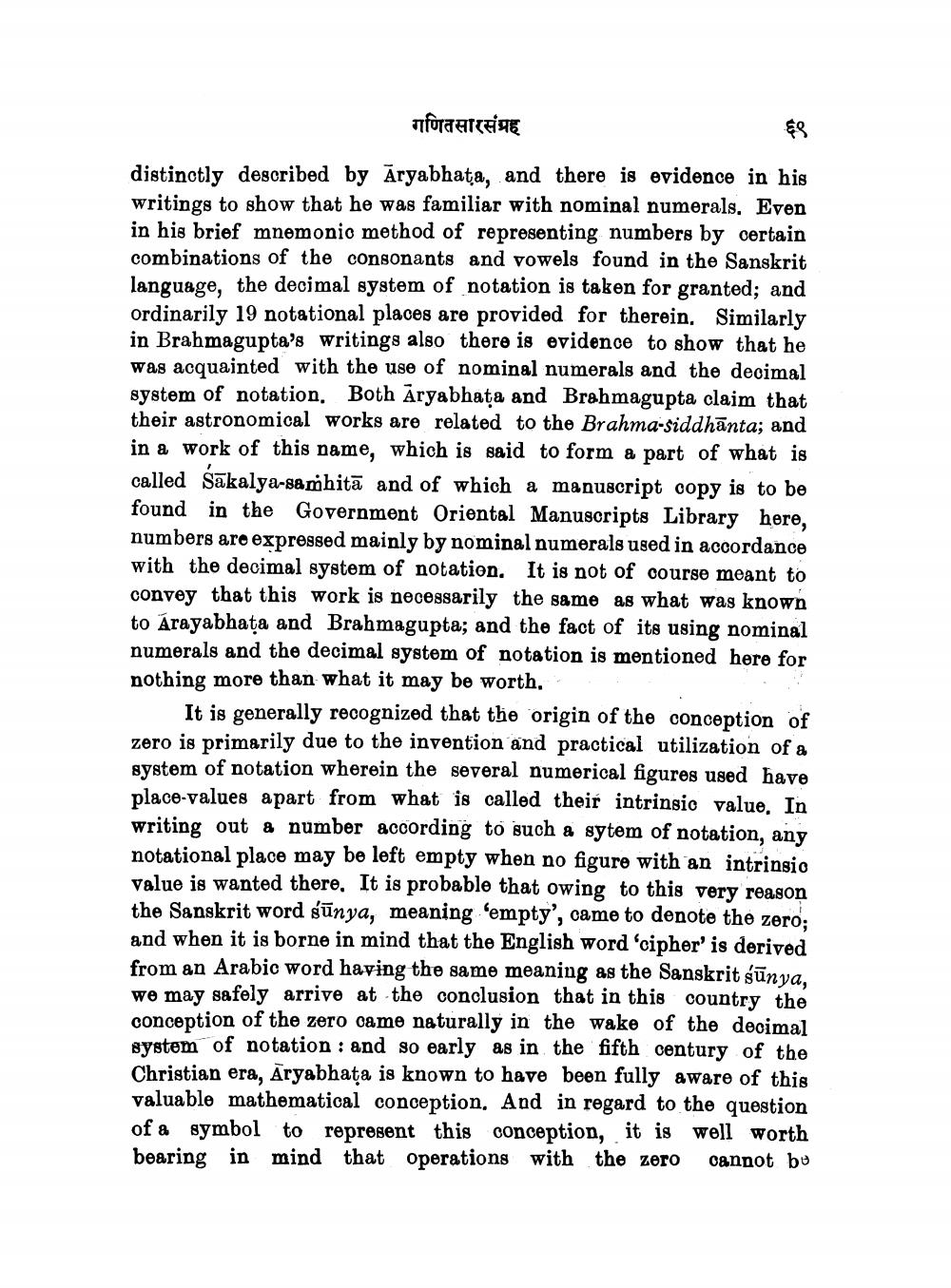________________
गणित सारसंग्रह
६९
distinctly described by Aryabhata, and there is evidence in his writings to show that he was familiar with nominal numerals. Even in his brief mnemonic method of representing numbers by certain combinations of the consonants and vowels found in the Sanskrit language, the decimal system of notation is taken for granted; and ordinarily 19 notational places are provided for therein. Similarly in Brahmagupta's writings also there is evidence to show that he was acquainted with the use of nominal numerals and the decimal system of notation, Both Aryabhata and Brahmagupta claim that their astronomical works are related to the Brahma-siddhanta; and in a work of this name, which is said to form a part of what is called Sakalya-samhita and of which a manuscript copy is to be found in the Government Oriental Manuscripts Library here, numbers are expressed mainly by nominal numerals used in accordance with the decimal system of notation. It is not of course meant to convey that this work is necessarily the same as what was known to Arayabhata and Brahmagupta; and the fact of its using nominal numerals and the decimal system of notation is mentioned here for nothing more than what it may be worth.
It is generally recognized that the origin of the conception of zero is primarily due to the invention and practical utilization of a system of notation wherein the several numerical figures used have place-values apart from what is called their intrinsic value. In writing out a number according to such a sytem of notation, any notational place may be left empty when no figure with an intrinsic value is wanted there. It is probable that owing to this very reason the Sanskrit word sunya, meaning 'empty', came to denote the zero; and when it is borne in mind that the English word 'cipher' is derived from an Arabic word having the same meaning as the Sanskrit sunya, we may safely arrive at the conclusion that in this country the conception of the zero came naturally in the wake of the decimal system of notation and so early as in the fifth century of the Christian era, Aryabhata is known to have been fully aware of this valuable mathematical conception. And in regard to the question of a symbol to represent this conception, it is well worth bearing in mind that operations with the zero cannot be




